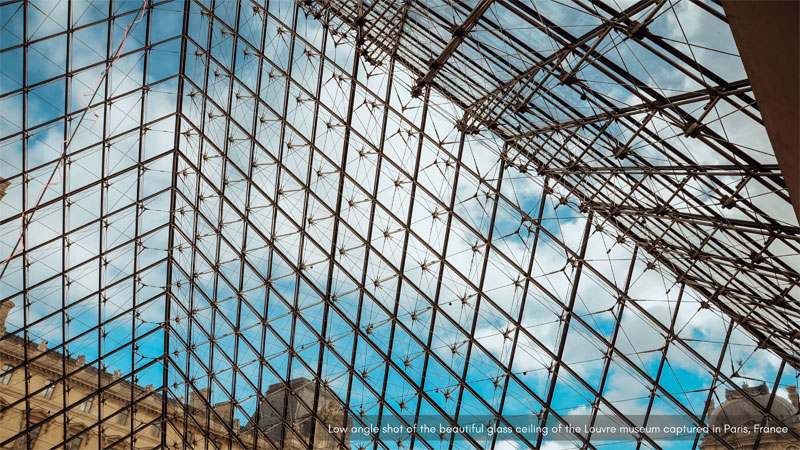IN THE KNOW

The Limits of Self-Insurance: Lessons from the Louvre Heist
FINE ART INSURANCE, THE LOUVRE HEIST, AND THE LIMITS OF SELF-INSURANCE
Robbers took less than seven minutes to steal the French crown jewels from the Louvre. No wonder the heist has inspired serious questions about self-insurance, fine art insurance, and the relevance of both when you’re displaying items of “inestimable” value in a setting open to the public.
So what’s the story — and what are the limits of self-insurance?
WHAT WAS LOST
The estimated insurance value of the Paris Louvre jewellery heist runs to $102 million / €88 million. Despite charges filed against four suspects, the jewels remain lost. As the only pieces left after the French Third Republic sold most of the royal jewellery in 1887, the national cultural tragedy far outstrips any monetary loss.
The robbers' haul included Empress Marie-Louise's Emerald and Diamond Set, a personal gift from Emperor Napoleon I to his second wife, Empress Marie-Louise of Austria. Empress Eugénie’s Pearl and Diamond Parure, once worn by the last Empress of France, has gone. Queen Marie-Amélie and Queen Hortense's Sapphire Set, first worn by Queen Hortense, is also lost.
These are just three of at least eight stolen items confirmed so far. But the Louvre is home to so much more — it’s the world’s largest museum, with a catalogue including 35,000 works of art on display and another 500,000 treasures stored in its archives.
NO FINE ART INSURANCE, NO PAYOUT
Because the stolen jewellery wasn’t insured privately, there’s no payout. The Louvre believed it could absorb the loss by self-insuring — the norm for museums holding priceless treasures. Even with private cover, the items were unique and therefore irreplaceable.
In France, national museum collections are not insured privately in the usual way.
Under French regulation, these works are treated as State property, and the government effectively acts as their insurer. Private insurance is generally only taken out when items are loaned or transported, because insuring an entire national collection would require astronomical premiums and complex appraisals.
Insuring the Louvre’s full contents in the traditional way would cost a fortune in premiums every year, even for basic fire protection. Some say the insurance cost could run into billions of euros. The risk would also be incredibly complicated to underwrite, as it’s impossible to appraise hundreds of thousands of items that can never be replaced.
Bearing all this in mind, it makes sense for the French government to act as its own insurer, absorbing any costs related to loss, theft, or damage. Given the premiums and the complexity of valuing such a vast collection, many say self-insurance was the only realistic option.

THE FINANCIAL BURDEN
On the face of it, the financial burden of the theft rests entirely with the state. But when you look closer, is there really a financial burden when it’s impossible to buy replacements for the stolen goods?
In a way, the Louvre is in the same financial position as it was before the loss — minus eight world-class exhibits. While the monetary loss has been estimated by the Paris prosecutor’s office at approximately €88 million, experts say this only covers the economic damage, not the jewels’ heritage and historical value.
The black-market value of the jewellery won’t be anywhere near the appraised figure simply because it’s difficult, if not impossible, to sell. Experts worry the gold will be melted down and the gems re-cut and sold.
Ironically, if the jewellery had been temporarily in transit or on loan instead of on show at the Louvre, it would have been covered by private insurance.
On the other hand, because the heist took place in broad daylight — using an ordinary lift and power tools — the museum’s security was clearly sub-standard. If the stolen goods had been privately insured, the insurer would have insisted on the best possible security before offering cover. Experts believe that the security weaknesses revealed after the theft might have complicated any private insurance claim.
A WAKE-UP CALL FOR COLLECTORS
The Paris heist has alarmed private collectors, galleries, and state-owned institutions around the world. Many predict a tightening of underwriting guidelines for all kinds of high-value collections.
Insurers will be asking for more details about security, insisting on proof, re-auditing more frequently, and using new tech such as AI-based object tracking.
In the meantime, the Louvre is hoping the stolen jewels are found and returned intact.
AS FAR AS YOU’RE CONCERNED
The news means anyone who owns precious or valuable artworks now understands how important specialist insurance really is.
You could self insure your home, your business, your vehicle, or your art collection. But that simply means you’ll have to pay to replace what’s been lost.
If you don’t have the money to do that, insure it — and relax.
TGC Asia can help with a wide variety of policies, including fine art insurance.
Sources